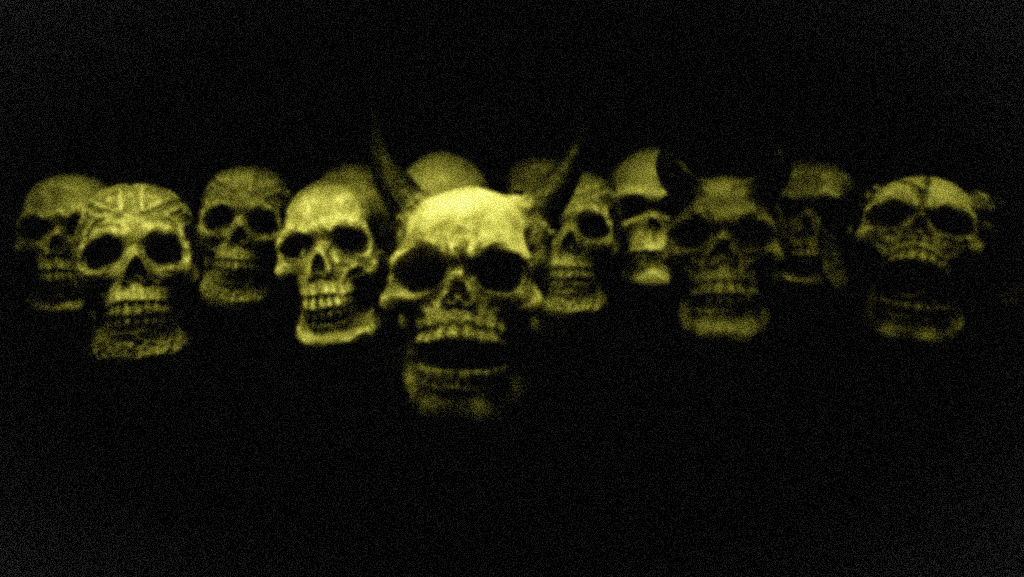Editor’s note: This is an article about horror on TV and some of the videos below may not be suitable for all viewers. Discretion is advised. If you have any comments or feedback about this article, please contact info@thesprout.co.uk.
On August 8th, the finale of the BBC’s Supernatural drama The Living And The Dead was broadcast on BBC Two at 9pm. A series filmed in the hay-fields of Somerset, made during the summer for the summer season, it is a show that I have watched with gripped attention and personal satisfaction as well.
This new series however comes at a time of some substantial grief for fans of horror-fantasy television with the recent news that Sky One’s horror series Penny Dreadful, after three successful years, has been cancelled.
And while Fox shall no doubt continue to enthral and terrorise us with its anthology hit series American Horror Story, there is nevertheless a hole to be filled with this most recent loss. But these shows suffer from one minor setback.
Specifically being that their type of horror is the type that is sometimes brought from what Stephen King has so vividly described as “The Gross-out: the sight of a severed head tumbling down a flight of stairs,” one of the three different genres used in writing of horror fiction.
Image: Stephen King @ Comicon by “Pinguino” [CC BY 2.0], via Wikimedia Commons
The other two are “Horror – when the lights go out and something with claws grabs you by the arm”; and “Terror – when the lights go out and you feel something behind you, you hear it, you feel its breath against your ear, but when you turn around, there’s nothing there…”
The worst of these, as King describes, is terror and that is certainly most true of The Living And The Dead, a show which embraces the BBC’s former love of the supernatural thriller as perfectly encompassed in this series with it’s slightly Gothic Victorian candle-light setting.
True, it brings back memories of a simpler time, specifically the 1970s when the BBC had nurtured a reputation for creating quality supernatural and horror programs, ranging from tales of the occult, ghost stories both modern and classical and spine-chilling thrillers.
Luckily, these were all shows and stories that went well within the confines of the 1970s greatest set-up – the anthology series, a format which has also experienced something of a resurgence of it’s own in recent years.
The trend began in 1970 with Play For Today‘s broadcast of John Bowen’s occult thriller Robin Redbreast. Shown during December 1970 the play was a modern day thriller encompassing elements of cult classic The Wicker Man with Shirley Jackson’s famous short story The Lottery and features elements of the pagan rituals of certain communities in the south-east of England.
This trend continued in 1971 when the fourth season of the hit anthology series Out Of The Unknown was broadcast during that spring. Having formerly been a format for adapted science fiction stories from the classics of E. M. Forster to the pulp of John Brunner.
By 1971 however the mood had changed and under a new production team the series went from science fiction to modern psychological horror thrillers. Among the more noteworthy episodes are the contemporary ghost story To Lay A Ghost, the psychological drama Welcome Home and the military thriller The Man In My Head.
Although the change in format was well-received by the viewers, Out Of The Unknown was sadly not renewed for a fifth series and faded away into obscurity but not without leaving a disconcerting impression on all those who had watched it.
“Out Of The Unknown may have been cancelled but it left a disconcerting impression in the minds of all those who watched it during that final series.”
The winter of 1972 proved to be the landmark time for contemporary supernatural horror. For during the period between October and December of that year the BBC were to broadcast three classic production in the genre.
Though largely forgotten today these shows have enjoyed constant admiration from fans of television that captures that unmistakably creepy and strangely nostalgic feel of the “hide behind the sofa” television horror from yesteryear.
Firstly there was the anthology series Dead Of Night, a series of seven contemporary ghost stories, each of them sharing only one similarity, the chilling opening of a unknown creature rushing through a forest in the dead of night, the screen pitched blood-red, and the frantic breathing of said creature building and rising to a fever pitch.
Of the seven made only three survive, the best of these being the series opening The Exorcism, which tells the story of two comfortable, middle class couples in a renovated cottage being terrorised in the middle of their Christmas dinner by the ghost of a woman from the past whose whole family were starved to death due to poverty and injustice.
A kind of modern socialist revenge tale, the episode culminates in both couples sharing the same terrifying fate as their ghostly host, being found on Boxing Day the next morning have been starved to death. Links for all three surviving episodes can be found on Youtube.
The Exorcism
Return Flight
A Woman Sobbing
After the Dead Of Night, came Nigel Kneale’s classic The Stone Tape. Billed as a ghost story with a difference, where ancient spirits collide with modern technology, the play, broadcast on Christmas Day, tells the story of a group of scientists working in an old mansion who stumble upon a paranormal phenomena and try to investigate it.
Their efforts lead to tragic consequences with their unleashing of a malevolent force upon one of their own. The series has since become a classic among supernatural investigators for promulgating the theory of residual haunting – where it is believed that ghosts may be recordings of past events made by the physical environment.
Finally following both of these came the second instalment of the BBC’s anthology A Ghost Story For Christmas, an annual production where a classic ghost story, usually an M. R. James tale, would be adapted and broadcast during the Christmas period on BBC Two.
The series had already adapted James’ The Stalls Of Barchester the previous year in 1971 to great critical acclaim with Robert Hardy. But it was their 1972 adaptation of A Warning To The Curious, starring minor Game Of Thrones star Peter Vaughan in the role of an amateur archaeologist who travels to a secluded Norfolk coastal town in search of a lost Saxon crown.
His efforts lead him to discover the crown only for him to then be pursued by the spirit of the Crown’s protector, which mercilessly pursues him, even after he returns the crown to it’s rightful place, until his brutal murder.
The Ghost Story For Christmas format would continue successfully throughout the rest of the 1970s, adapting several more M. R. James stories, including Lost Hearts in 1973 and The Treasure Of Abbott Thomas in 1974.
In 1976 the series would adapt Charles Dickens’ classic The Signalman; with the final two instalments being original programs which were critically panned in comparison to the more well-received adaptations.
The BBC’s last classic horror series from this period comes in 1977 with the broadcast of Supernatural. Probably the most superbly written of all the series discussed here Supernatural was broadcast during the summer months of that same year and written by BBC stalwart Robert Muller.
In each episode, a prospective member of the “Club of the Damned” is required to tell a horror story, and their application for membership is judged on how frightening their story is. Applicants who fail to sufficiently frighten the members are denied membership and killed.
The performances range perfectly from Billie Whitelaw’s Gothic femme fatale, serving up her former lovers to her werewolf husband, Jeremy Brett’s gap-toothed madman, whose claims of being hounded by an unseen doppelgänger do not impress the club members and Vladek Sybal’s Austrian innkeeper whose life-sized marionettes come to life.
“With superb actors like Jeremy Brett and Billie Whitelaw, Supernatural was critically acclaimed but suffered poor ratings.”
Though Supernatural was critically acclaimed, with superb writing and an excellent cast of actors, it suffered from poor ratings due to being broadcast in the middle of the summer when many were not as inclined to tune in and sadly it was not renewed for a second season.
Since that fateful decade the only supernatural dramas that have made it into production at the BBC are those that have been produced by the die-hard fans, in particular people like Mark Gatiss and Neil Cross, both of whom wrote scripts for a revived Ghost Story For Christmas on BBC Four between 2005 and 2013.
But what is the future for supernatural and horror drama in today’s television? Is it confined to one-off production like Crooked House in 2008, or Remember Me in 2014 or The Living And The Dead in 2016? Or shall it take-off with more seminal shows like Black Mirror and American Horror Story? We shall have to wait and see.
Related Articles:
Want to get involved?
Want to reach thousands of young Cardiffians? Submit your news here or register to become a contributor.
Want to become a reviewer? Join the Sprout Editorial Group on Facebook or email tom@thesprout.co.uk.
Click here for the next Sprout Editorial Group meeting:
Comment below:
It’s free and quick to comment below but we recommend signing up with your email or as a guest to keep usernames Sprouty and anonymous (and never post personal details!).
If you want more info on staying safe online, check out our online safety section.






